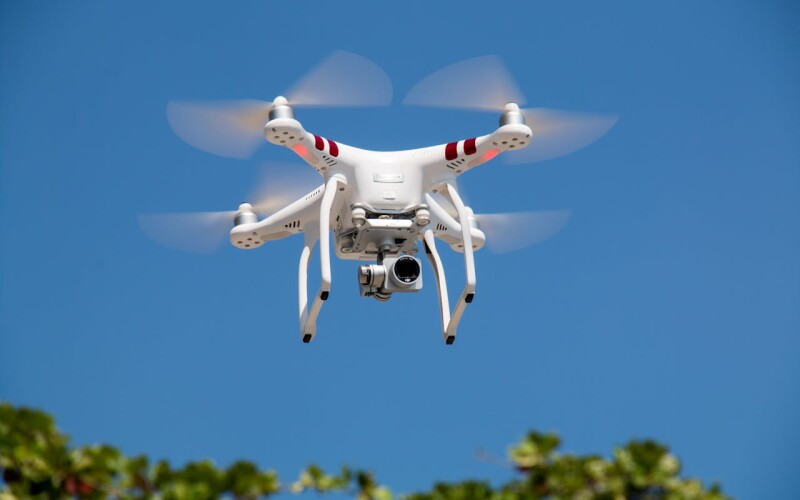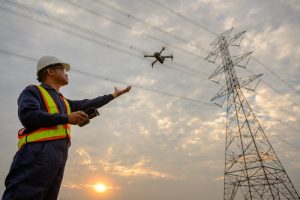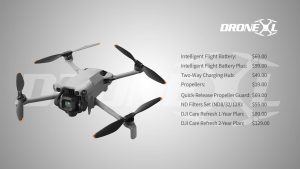Around the Commercial Drone Industry: Exploring Legislation, Agricultural Advancement, and Delivery’s Future
The commercial drone industry has transformed from niche trials into a vibrant sector significantly impacting agriculture, delivery, and airspace management. This guide delves into the core areas of drone legislation, pioneering agricultural technologies, and the imminent changes in drone delivery, offering expert insights, client stories, and references to drone culture and trends.
The Legal Landscape of Commercial Drones: Navigating the Skies Responsibly
The foundation of a thriving drone industry is established by evolving and clear legislation. As of 2025, drone regulations in the United States are increasingly sophisticated, balancing innovation with concerns for safety and privacy.
- Registration is Mandatory: Drones weighing over 250 grams (~0.55 lbs) require FAA registration for a modest fee, valid for three years. Consider this the passport for your aerial device.
- Remote ID Rules: Drones must transmit real-time location and ID data via integrated or external systems, unless operating in designated areas.
- Altitude Limits: Without special FAA approval, commercial drones are restricted to a maximum altitude of 400 feet to prevent conflicts with crewed aircraft.
- Visual Line of Sight: First-Person View (FPV) flights need a visual observer to maintain safety and legality. For nighttime operations, anti-collision lights are compulsory.
- Certification & Training: Commercial drone operators must have Part 107 certification and undergo regular training.
Regulatory Globalism: While rules vary by region—from stringent European privacy laws to flexible Asian regulations—the key is to understand local laws, prepare in advance, and ensure compliance.
BVLOS Revolution: The shift towards Beyond Visual Line of Sight (BVLOS) operations is significant, with new legislation like the LIFT Act aiming to streamline BVLOS approvals via AI and performance standards, promising vast opportunities in medical deliveries, infrastructure monitoring, and emergency responses.
Drones in Agriculture: From Futuristic Concepts to Practical Applications
The term “drone farming” may evoke scenes from science fiction, but the reality is catching up rapidly.
Precision Agriculture: The Modern Farmer’s Edge
- Multispectral Imaging Drones help detect crop stress and diseases, leading to yield improvements of up to 20% in advanced farms.
- Aerial Mapping & Soil Health allows for precision in drainage planning and soil analysis, enhancing planting efficiency and yield.
- Drone Spraying enhances the application of fertilizers and pesticides, reducing chemical use by 28–35% and labor costs significantly.
- Livestock Management through drones equipped with thermal cameras improves herd monitoring in inaccessible areas.
ROI & Client Success Stories
For example, Parker Farms in Iowa achieved 8% higher yields and 28% herbicide savings, recovering their investment in under 18 months. California’s Sunnyvale Orchards reduced water usage by 40% and improved crop quality by 15%, demonstrating rapid return on investment.
Resilience Matters: Drones have proven crucial during climatic disruptions, enabling operations in challenging conditions and mitigating crop losses by 30% during disasters.
Government Incentives
- USDA EQIP Subsidies: Covers up to 75% of drone adoption costs for precision farming.
- State Tax Credits: Agricultural states offer 10–20% credits for integrating drone technologies.
- Carbon Programs: Encourage the use of drones in precision agriculture to qualify for carbon credits.
Drone Delivery: Transforming Everyday Logistics
Drone delivery has progressed from single-use experiments to substantial roles in retail, healthcare, and logistics.
Rigorous Rules, Real Rewards
- Legislation Drives Safety: With advancing BVLOS regulations, drone delivery for medical, pharmaceutical, and retail purposes moves beyond trials to real-world applications.
- Performance & AI: Recent legislative acts emphasize rigorous safety benchmarks, AI integration, and efficient approval processes.
Delivery in Action: Real-World Impacts
- Healthcare Lifelines: Drones supply vaccines and medical goods to remote areas, bridging gaps where conventional transport struggles.
- Retail Logistics: Drones support urgent deliveries, like groceries and replacement parts, reducing emissions and congestion.
- Emergency Response: UAVs provide swift disaster relief, ensuring critical supply deliveries and real-time surveillance for public safety.
What Sets Us Apart: The Human Element in Drone Expertise
Successful drone operations rely on passionate experts with technical prowess and a client-focused attitude. From handling regulatory paperwork to providing training, our team supports clients in fully leveraging drone technology.
Illustrating this, Anna, a Nebraska farmer, transitioned to drone monitoring with our assistance, resulting in a record harvest and reduced operating costs, affording her more leisure time.
Understanding complex legislation may seem daunting, but our comprehensive support—from securing certifications to technical troubleshooting—ensures a smooth operation.
Trends & Emerging Concerns
- AI + Drones: The fusion of AI enhances drone safety and efficiency, offering features like obstacle avoidance and rapid airspace authorization.
- Data Security: Managing aerial data securely is paramount, and we advocate for strong encryption and exemplary storage practices.
- Sustainability & Emissions: Drones significantly reduce industrial carbon footprints by minimizing chemical use and streamlining deliveries.
- Public Perception & Privacy: As drone usage grows, addressing privacy concerns and engaging communities are crucial for fostering trust.
Common Mistakes to Avoid
- Ignoring Local Flight Restrictions: National parks and other areas often have strict no-fly zones; staying informed is essential.
- Underestimating BVLOS Complexity: Even with changing laws, preparation and compliance with waiver requirements remain critical.
- Overinvesting in Drones: We advise clients to choose models that meet their needs without unnecessary expenditure.
Frequently Asked Questions
Q: Is a drone license mandatory for all commercial operators?
A: Yes, in major markets like the US, with Part 107 certification and ongoing training mandatory requirements.
Q: How fast can agricultural drones yield ROI?
A: Typically within 12–18 months, though higher-value crops may see quicker returns.
Q: Are drone deliveries environmentally beneficial?
A: Yes. Unlike traditional delivery methods, drones achieve lower energy consumption, reduce road traffic, and promote localized supply chains.
Q: What’s next for drone legislation?
A: Expect faster BVLOS approvals, increased AI utilization, and rigorous safety standards, all contributing to bolder commercial applications.
A Few Cultural References
Drones feature prominently in pop culture, from movies to memes. Whether it’s humorous scenes in films or viral UAV antics, the core of the drone revolution remains human-driven innovation.
Final Thoughts: Trust Us with Your Drone Journey
From regulatory advice and drone selection to system design and support, we pair technical expertise with personalized service. Joining the commercial drone industry means more than acquiring new gadgets; it’s about building sustainable, productive communities.
Looking to purchase drones, integrate them into your business, or need guidance on licensing and regulations? We invite you to reach out. Remember, in drone operations, the sky is not a limitation—it’s where the action happens.













